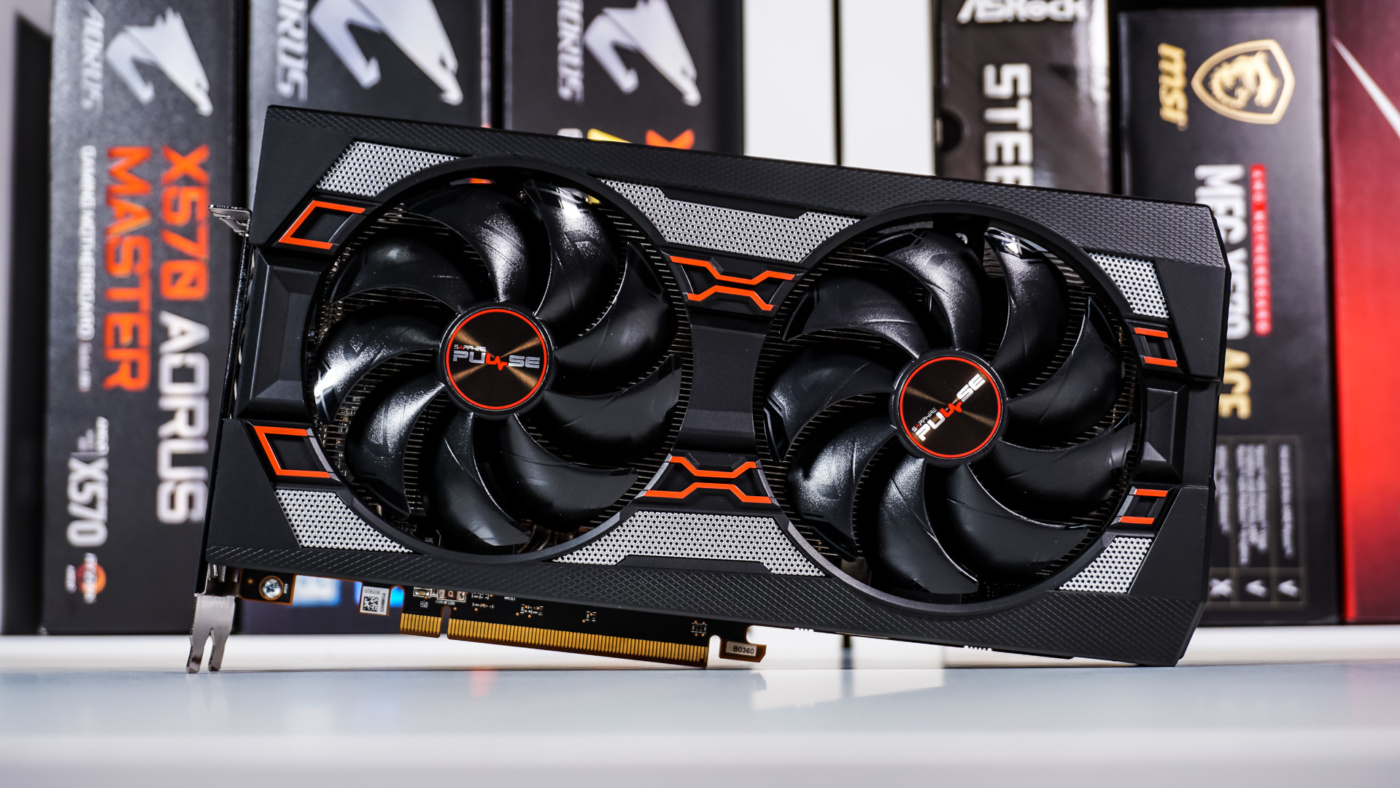Sapphire Pulse RX 5700 Overview
This is our first time with a “Pulse” card from Sapphire. Compared to the Pulse RX 580 it looks like Sapphire has changed the cooler shroud. Instead it being all black, it is now black with red and silver accents.
The card features Sapphire’s Dual-X cooling solution which is made up of two 95 mm cooling fans, which sit on top of an aluminum fin stack with multiple heatpipes. These fans are dual ball bearing fans, which have an 85% longer lifespan than sleeve bearings. The new design of the fan blades makes them up to 10% quieter than the previous version. These fans have an idle fan mode, so they will turn off when the card is not under heavy load.


On the main side of the card you’ll find a Sapphire logo, which will light up with RGB lighting when you have your system powered on. The card is powered by a combination of 8-pin and 6-pin PCI-Express power connectors. These connections sit at and indent in the card. For those wondering this card features a 7+1+2 power phase design.


The back of the card has a full-cover aluminum backplate, which is black with silver and red accents. Here we can also see the dual-BIOS switch can be accessed on the main side of the card. The BIOS switch is set to performance mode by default, which put the card at the settings we mentioned in the beginning of the review. The other mode is silent, which brings the base clock down to 1465 MHz, game clock down to 1625 MHz, and boost clock to 1725 MHz.
Finally when it comes to connections you have a single HDMI and three DisplayPort 1.4 connections.





